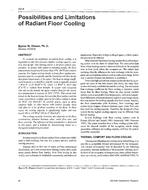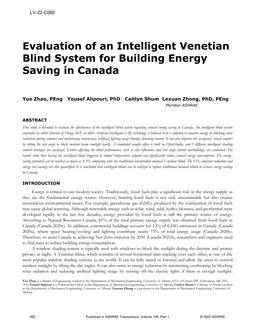Green Building XML (gbXML) is one of the most prevalent data models used for Building Information Modeling (BIM). It enables interoperability between BIM and Building Energy Modeling (BEM). BEM is often used in building performance analysis software tools. However, through interviewing engineers and building energy modeling professionals in the industry, it turned out that most gbXML files are only used for importing and exporting building geometry information. Information such as Heating, Ventilation, and Ait-conditioning (HVAC) systems and internal loads are rarely handled due to the lack of functionality in current BIM software. Taking account of more than 15% of the total energy consumption in the US is used by HVAC systems (DOE 2011), it is crucial to enable seamless HVAC data exchange between BIM software and BEM software.
This paper researched the definition rules of HVAC systems in the current gbXML schema 6.01 version. Firstly, through a detailed data mapping of ASHRAE baseline HVAC system from IDF data model (EnergyPlus version 9.0) to current gbXML schema (version 6.01), interoperability issues were discovered and were concluded into three catecgories: missing components, overlapping components, and complex data mapping rules. Secondly, through redefining data mapping rules of current gbXML schema in terms of HVAC systems, the ASHRAE baseline HVAC system is able to be coded as a gbXML file. Finally, the gbXML file will be validated through a translation case study, focusing on primary HVAC system and boiler data. Revit 2020.1 Architecture is used in this study as the BIM tool. OpenStudio 2.8.1 and EnergyPlus 9.1.0 are used as the BEM tools. They are open-source and cross-platform, being adopted by lots of mainstream building performance analysis software.
Based on the result of this study, current gbXML schema version 6.01 is capable of defining HVAC systems data, but the data mapping rules need to be documented and presented. Missing components and overlapping components issue could be solved by updating the schema. Interoperability improvement will eliminate the duplicate generation of HVAC data and allows a bidirectional information update between BIM and BEM software tools, supporting a more accurate and efficient building performance analysis process.
Citation: 2020 Virtual Conference Papers
Product Details
- Published:
- 2020
- Number of Pages:
- 9
- Units of Measure:
- Dual
- File Size:
- 1 file , 1.6 MB
- Product Code(s):
- D-VC-20-C019


